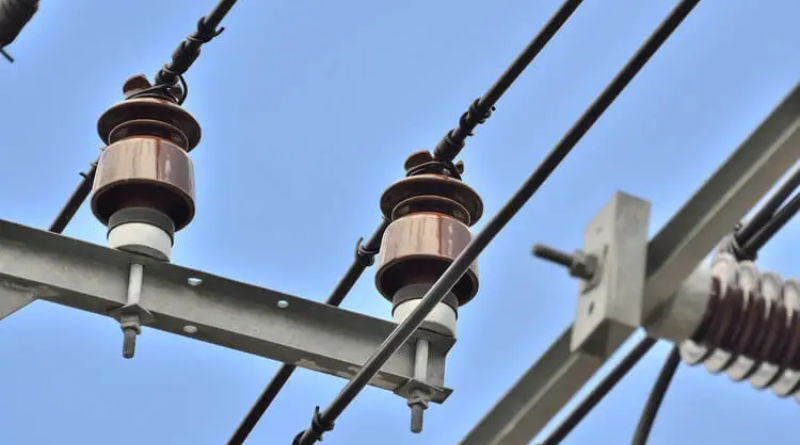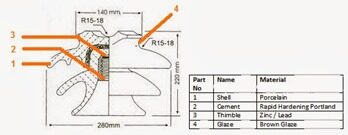

However, rain sheds or bulkheads in an isolator serve a different purpose. These sheds or rain screens are designed so that when it rains, the outer surface of the shed becomes wet but the inner surface remains dry and non-conductive. Therefore, the top conductor is suspended by the wet surface of the pin insulator.
Constructive consideration of electrical insulators

The energized conductors are connected to the highest point of the insulator, which is oriented to help build ground potential at the bottom of the insulator. The insulator must withstand the potential voltages between the conductor and earth. The shortest distance between the conductor and the earth surrounding the shape of the insulator and over which electrical current can flow through the air is considered a fire during a rupture.
When the insulator is wet, its outer surface becomes almost smooth. This reduces light through the gap in the insulator. The design of an electrical insulator should be such that fire reduction in a gap is minimal when the insulator is wet. For this reason, the top layer of a pin insulator is constructed like an umbrella to protect the remaining lower part of the insulator from splashes. The top of the upper sublayer is sloped as flat as possible to provide the greatest possible fire amplitude during rain.
How to measure and protect current transformers
Current transformers (CTs) play a crucial role in electrical power systems, as they accurately measure electrical currents and provide important information for various applications. However, measuring and protecting these devices is equally important to ensure their reliable operation and avoid potential hazards. This article discusses important factors in measuring and protecting current transformers.
Proper installation and connection
When installing a current transformer, it is important to follow the manufacturer's guidelines and industry standards. Make sure the current transformer is the correct size for the application and is correctly connected to the circuit being monitored. Incorrect installations can result in inaccurate measurements and possible damage to the current transformer.
Accuracy Check
To ensure reliable performance, it is important to regularly check the accuracy of current transformers. This can be done through preliminary injection tests, where a known current is injected into the primary side of the current transformer and compared with the output from the secondary side. Any significant deviation from expected values indicates that recalibration or replacement is necessary.
Insulation and grounding
CTs must be adequately isolated and grounded to prevent electrical failures and ensure operator safety. Regularly check insulation for signs of wear, damage or contamination. Additionally, ensure CTs are properly grounded to minimize the risk of electrical shock or voltage spikes.
Overcurrent protection
Install appropriate overcurrent protection devices such as fuses or circuit breakers to protect the current transformer against excessive currents. These devices interrupt the circuit in the event of a fault or overload, preventing damage to the current transformer and associated devices.
Temperature monitoring
Monitoring the temperature of power transformers is essential for their protection and longevity. Excessive heat can damage insulation, reduce accuracy, and even cause catastrophic failures. Use temperature monitoring devices or sensors to detect abnormal temperature increases and take appropriate action if necessary.
Maintenance and testing
Regular maintenance and testing are essential to ensure the long-term reliability of current transformers. Inspect current transformers regularly for signs of physical damage, loose connections, or corrosion. Additionally, perform routine tests to verify the accuracy of the current transformer and verify its performance under various load conditions.
Environmental considerations
Consider the environmental conditions in which current transformers will be installed. Moisture, dust and corrosive gases can affect its performance and lifespan. Protect current transformers from these elements, for example by installing them in weatherproof housings or applying appropriate coatings.
Training and specialization
Ensure that personnel responsible for measuring and protecting current transformers are adequately trained and have the necessary knowledge. For effective protection and accurate measurements, in-depth knowledge of CT operation, installation and maintenance is crucial.
Conclusion
In summary, measuring and protecting power transformers is essential to their reliable operation and longevity. By following proper installation practices, performing regular accuracy testing, implementing appropriate protective measures, and performing routine maintenance, you can ensure the optimal performance and safety of power transformers in your electrical system.

